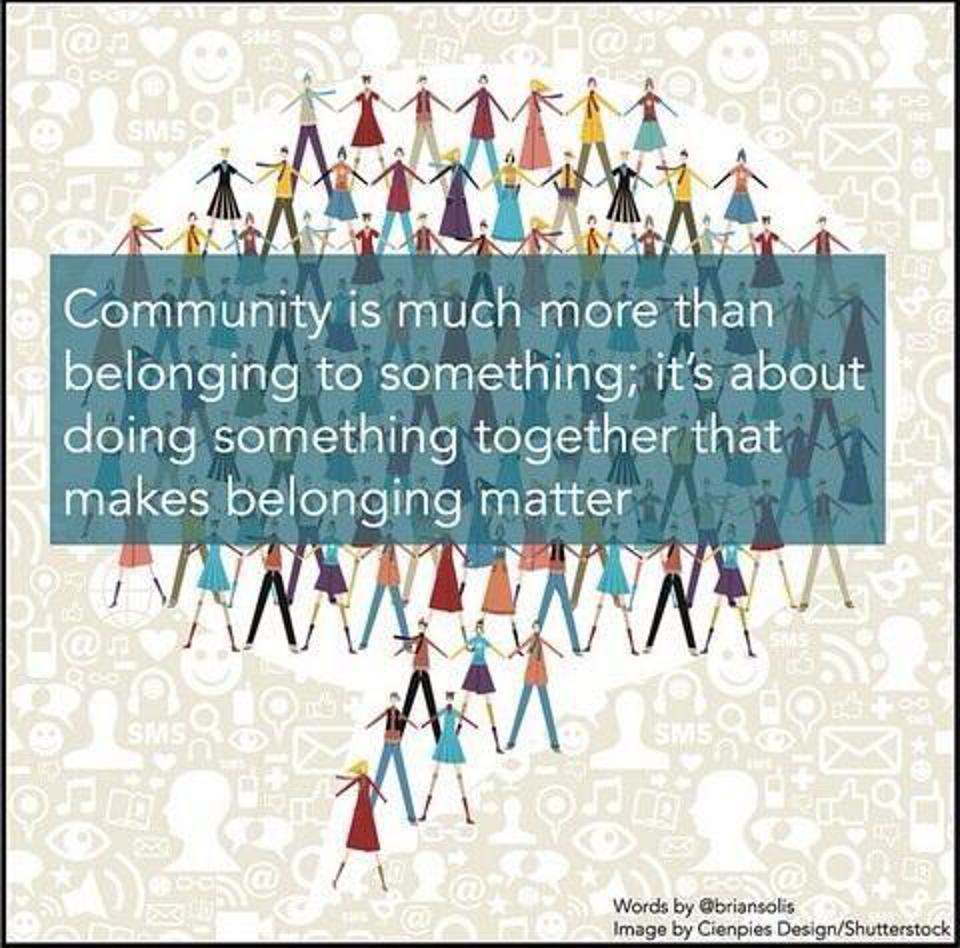

Exploring web3 through a new lensPHOTO BY @JEZAR, UNSPLASH.COM
This is a very important time and inflection point in the evolution of web3. There’s a fantastic opportunity for brands and marketers willing to engage with this new technology. That said, in the wake of the recent volatility in the NFT and crypto markets, waves of industry layoffs, thefts, hacks, and SEC probes, it’s clear that web3 leaders and the supporting ecosystem must prioritize trust and safety, utility, and long-term value and community to encourage adoption.
At the recent CMO Club Innovation Forum focused on web3 in Los Angeles, I spent time with brand executives who were eager to learn about the promise of the next web. We explored all aspects of web3, including the metaverse and NFTs, as well as foundational technologies like cryptocurrencies and blockchain. Going beyond branded NFT drops, live events, concerts, and metaverse marketing activations, I learned that brands have early access to a unique window of opportunity. Some of those lessons were organized into a CMO guide for “understanding the future of brands, consumers, and community in a web3 world.”
It’s a rare moment for brands to observe, learn, and ask questions, without running a great risk of missing out. The insights gained can lead to the creation of newfound moments that matter for brands and consumers and to build value-added communities that earn market and cultural relevance in new frontiers.
Value creation in web3 starts with a beginner’s mind – one that sees branding, commerce, service, loyalty, and marketing in the future web with openness, eagerness, and lack of preconceptions.
The questions that brands should start with as they explore web3 opportunities include:
- What is my purpose?
- Who are my customers, and what do they value?
- What new value can I create through web3?
- How can I enhance relationships with existing consumers and prospects?
- How can we create new, long-term communities where consumers are also stakeholders?
- How can I continue to add value over time as we progress between the iterations of web2 to web2.5, web3, and beyond?
How does Web3 improve upon Web2?

The legacy brand style guide, ANTONI SHKRABA, PEXELS.COM
When comparing the ills of web2 and the prospects of web3, we can explore that topic in depth at another link.
With the innate transparency, accountability, and equity rooted in web3, brands have an opportunity to change the relationship between brands and customers—to shift from consumers to stakeholders and markets to community.
Over the next 10 years, web3 will transcend web2 in its promise toward decentralization, ownership, portability, and 3D immersion. Today, much of what we’re seeing is technically web2 just using crypto to facilitate transactions, using blockchain ledgers to capture transactions.
To move from web2 to web3, brands must imagine new possibilities and experiment. They must also reimagine hierarchical relationships between brand and consumer toward one of empowerment and mutual value.
The value that web3 unlocks is the empowerment of the consumer. Through data sharing, portability, ownership, and equity, web3 allows consumers to become stakeholders in the brand – through digital assets, NFTs, tokens, achievements, and experiences, etc. Web3 unlocks new, previously unimaginable opportunities that brands can use to create connections with consumers and communities. Brands will be able to attract a new generation of digital natives and early adopters who are seeking more exclusive, immersive, and equitable relationships.
The trade-off is that brands will have to allow for the democratization of the brand itself. That’s something that brands aren’t used to. Most brands practice a command and control approach to marketing and operate according to a brand style guide. In a web3 world, brands have to start thinking about a decentralized style guide, a participation style guide, and a cooperation style guide.
One question to explore is: what could a meaningful and productive community look like where the brand is part of the community and the community defines the brand?
How does Web3 change the way marketers build and sustain communities?

The power of true community, @BRIANSOLIS
Web3 will change everything (as long as its future is shaped by creatives, innovators, and optimists) about the way brands think about communities today and who owns them. I always believed that being part of a community is the real magic. When the community works together to build something greater than just the idea of the community or the individual itself, it gives it a purpose.
Simon Sinek famously asked business leaders to start with “why?”
Why ask “why?”
It’s the one question that brands don’t ask enough. But it’s just the beginning of a more reflective and auspicious exercise to find meaning, worth, and openings to reinvent customer experiences and relationships.
Adding to the list of questions above, also ask:
- Why do you believe you belong here?
- Why are we doing this?
- Why now?
- Why are customers spending time in these corners of the web?
- Why do you think this will create value for your business and better user experiences?
The answers inspire meaningful strategies for pilots and long-term value creation.
The answers challenge conventions of traditional “build it, and they will come” mindsets.
Instead, the next web and the next era of brand engagement is constantly facilitating value and empowering a community, not only today but also in the future. It’s also about asking how communities can maybe even splinter, engage, and be active participants in forming what the brand means in the market.
What is the value that we can create for someone now and over time? Communities are about value, and relationships are about mutual beneficial engagement.
How does Web3 empower the consumer?

Web3 empowers new user experiences, EKATERINA BOLOVTSOVA, PEXELS.COM
The way web3 empowers consumers is through a wallet. Web3 wallets are dedicated apps that can access cryptocurrencies and NFTs, as well as lending and borrowing platforms on decentralized exchanges (DeXs). But in time, wallets will also become part of the identity of people online and IRL, giving consumers control of their data, how it’s used, and at what cost/benefit to them.
On the path to decentralization, blockchains provide authentication and verification of digital transactions, building trust in the process. This will ultimately change the dynamic between brands and consumers.
Right now, we’re in between web2 and web3; let’s call it web 2.5. Today, even though we’re transacting with crypto, NFTs, blockchains, and exploring virtual worlds, centralized networks still control customer data and resell that information, which is then used for targeted advertising and personalization. Because we’re in this in-between stage, marketers are limited in their experiments with web3 platforms, mostly using methodologies and metrics that defined marketing in web1 and web2. Eventually, in a web3 world, as data becomes interoperable, portable, and owned by consumers, their wallets become the super cookies of tomorrow. Privacy, identity, preferences, history, insights, and access become currencies. Consumers become part of the process and have a say in how they’re marketed to (or not). Attention, enhancement, and consent are the keys to customer connection, engagement, and loyalty.
Brands will have to be much more creative, forthcoming, and dynamic. Instead of a top-down, centralized approach to traditional marketing, brands will have to cede control and create incentives and hyper-personalized benefits to entice customers to grant access to wallets. Brands will have to understand not only who that dynamic consumer is, but also deliver real-time dynamic value across platforms that attract and retain them over time.
Web1 and web2 will co-exist with web3 for the foreseeable future. But that doesn’t mean that marketing itself only needs to evolve for web3. The cookie is already going away. Customers want greater personalization, value, and experiences, today. Legacy approaches will have to be reimagined for the next web. Lessons and insights from web3 engagement will only benefit how marketers engage customers in web1 and web2.
How does being a customer move beyond a transactional relationship with Web3?

Blurring the line between worlds, MATHEUS BERTELLI, PEXELS.COM
Historically, businesses today often define customer journeys, whether as funnels or infinity loops, with touch points intended to convert attention into transactions. One of the big shifts since 2020 disruption is that the world became digital-first and with those new technologies and behaviors, customers became more aware of their capabilities, informed about new options, and empowered to change their routines in their best interests. In fact, every year, customers increasingly say that the experience brands provide is as important as their products and services.
If you think about it, most of the accelerated digital transformation over the past few years didn’t use advancements in digital technologies to innovate. They digitized pre-pandemic processes. But customers want, not only meaningful experiences, but also in this digital-first world, they now expect personalization and anticipation. Customers want you to…know them, deliver personal value, understand or anticipate their unique needs and expectations, demonstrate empathy, offer integrated services and experiences, and not treat them as a number, metric, or statistic.
Marketing innovation isn’t something that can wait until web3, creating new value, personalizing engagement, and empowering customers to be part of the experience is the imperative in and era of web 2.5. That’s the definition of innovation after all. It’s transforming original ideas that create and deliver new value.
So what does the evolving consumer value? Perhaps a more powerful question is, what does the consumer not know to value yet that they’ll love when they see it?
Marketing innovation, centered on customer experiences and empowerment, will connect the dots between web2, web2.5, and web3
Web3 isn’t just about tokens, or NFTs, or the evolution of the metaverse – it’s about how the next chapter of the web reimagines the relationships between people, companies, and information. It forces the reinvention of touch points and customer journeys.
Brands face a crossroads in aligning next-generation tech, new platforms, and human-centered design to earn attention, engage people, and create innovative experiences that foster community and, ultimately, loyalty. It’s a rare chance to reimagine marketing, service, and commerce for a decentralized world.
You get to co-create the next chapter of the internet, business value, and customer experiences.
Be open.
Be curious.
Ask questions.
Design experiences and relationships and consider how they materialize in new touchpoints to foster mutually-beneficial outcomes, now and over time.
Create multi-dimensional experiences beyond transactions.
Measure relationships and community.
Experiment. Continuously.
Originally published in Forbes








